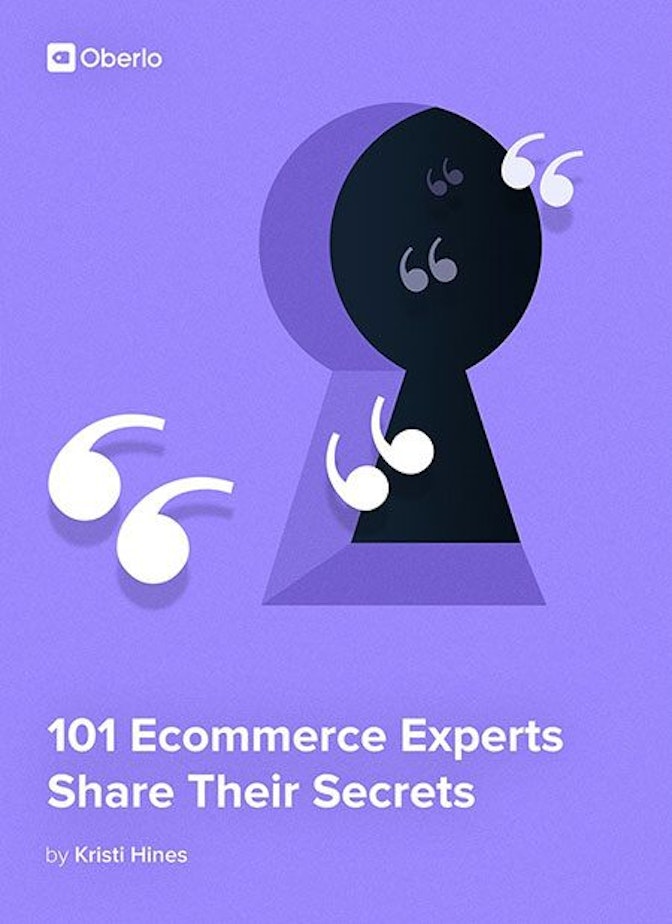We reached out to the top ecommerce experts and asked them to share their best ecommerce quotes and advice. Here’s what they shared:



The Best Ecommerce Quotes from the Top Ecommerce Experts
Gary Gebenlian
COO and Co-Founder, Butterfly
Twitter LinkedIn

→ Click Here to Launch Your Online Business with Shopify
“Early in the tenure of your eCommerce store, you’ll almost certainly be testing, tweaking, and evolving to find your sweet spot. This will happen more often than you think! Need a function or feature? There’s a widget that you can plug-in that probably does almost all of what you need with some configuration. No need to go full-custom on it and build your own. The more standard apps, themes, platforms, and widgets you use to power your store, the more flexibility and speed you will have to evolve and grow.
Click, Click, Click. Don’t assume it all works! Put yourself in your customers’ shoes and do everything they will do. Click links in your customer emails to make sure they work. Click your “contact us” links and submit an inquiry. Click through your site navigation and site search to find a product you would buy if you were a customer. Place an order. Read the confirmation emails. Read the help area documentation. Start an online chat. Click here. Click there. Click everywhere. You own the customer experience and you must experience it to own it.”
Venesha Brooks
Customer Experience Strategist, Surfly
Twitter LinkedIn

“Personalization is the key to customer experience. Many companies are starting to personalize their entire customer journey. Delivering personalized services requires companies to understand their customers’ behaviors. When it comes to selling products online emotions are the only path to winning customers rather than price. Even with advanced digital technology, many customers find it difficult to empathize with a particular brand. Adding a human touch to your customers’ experience can help you distinguish your brand. Visual engagement tools, such as co-browsing and video chat can help build an emotional bond with customers. Instead of focusing on generating leads and sales, its time to think about your customers – those customers who make buying decisions based on how much they relate to your brand.”
Kim Butler
Owner, The URL Dr.
Twitter LinkedIn

“All e-commerce sites need to start with best practices in web design in mind. Use dark, san serif text on white or light colored backgrounds. Make sure the font size is at least 12 points, if not larger, to accommodate mobile devices. Use white space to give your site a clean, uncluttered, and professional look.
Don’t overlook the importance of your images. Backgrounds for product images should be white. Decide on the size you’ll use for product pictures, category pictures, lifestyle shots, and thumbnails, and then stick to them. Nothing screams unprofessional like different size product pictures with different backgrounds next to each other on a category page.
First impressions are critical online, which means you have about 5 seconds to tell your visitor who you are, what you do, convey to them that you’re credible and trustworthy, and help them find a product they can’t live without. Following best practices in web design will help you convert more visitors to customers.”
Casandra Campbell
Founder, Minimalist Marketing
Twitter LinkedIn
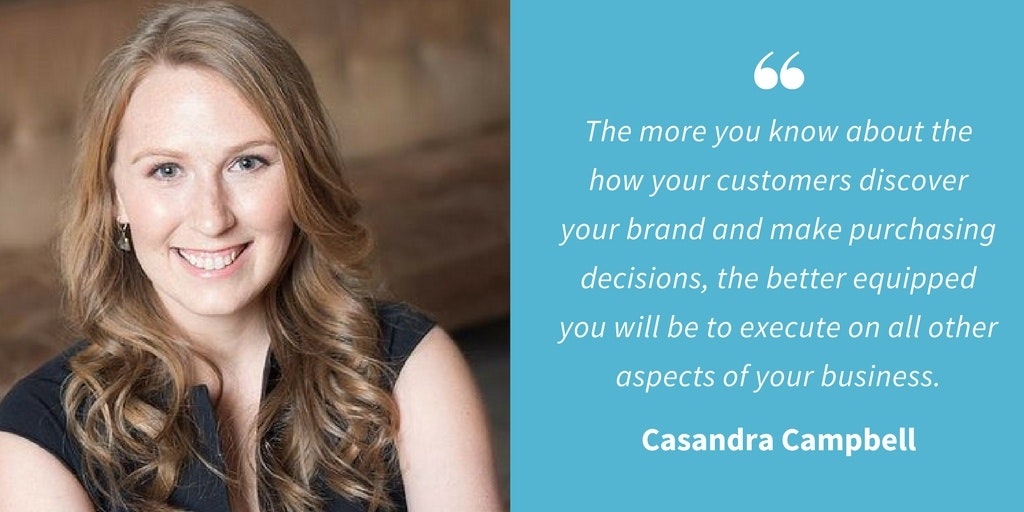
“Try to understand the buyers journeys your customers take. Few people buy something the first time they visit a website. Instead, they make the decision slowly over time, often after many brand interactions. Marketing tactics, customer loyalty programs, pricing strategies, and more all play a large role in the buyers journey. The more you know about the how your customers discover your brand and make purchasing decisions, the better equipped you will be to execute on all other aspects of your business.”
Casey Markee
Founder, Media Wyse
Twitter LinkedIn

“AI-powered chat bot services are taking off and should explode in 2018. A recent BI Insider survey showed that 80% of those surveyed said that they had been directed to review chat bot automation and have some sort of solution ready by 2020.
Python, and it’s wide acceptance and ease-of-use should be the programming language of choice for chat bot AIs and I expect that will have a boom in 2018 as well.
Chat bots represent the next evolution in natural language processing. And they provide a cheap and effective way to answer simple questions and provide a 24/7 access point between businesses and customers. Time to embrace our robot overlords.”
Annette Matzen
eCommerce Manager, Christian Brands/Creative Brands
Twitter LinkedIn
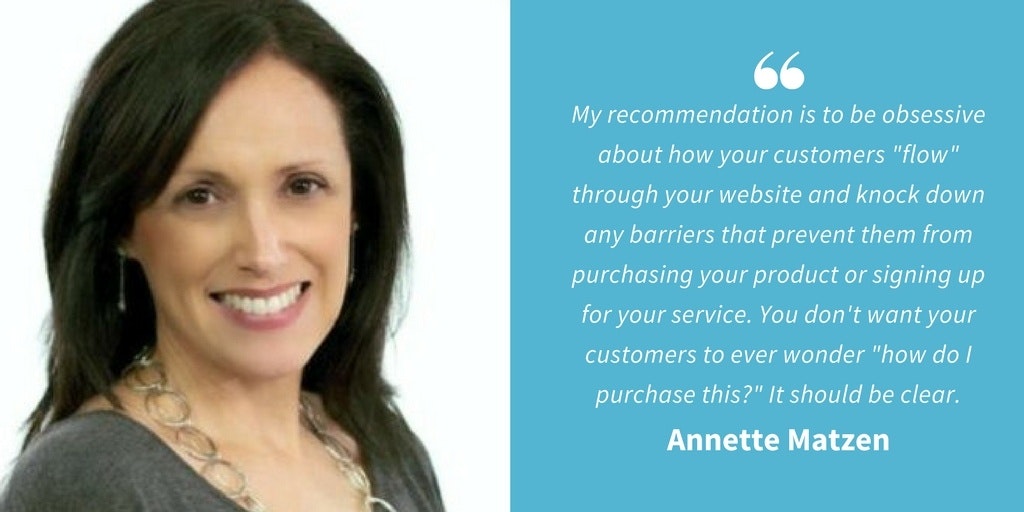
“My recommendation is to be obsessive about how your customers “flow” through your website and knock down any barriers that prevent them from purchasing your product or signing up for your service. You don’t want your customers to ever wonder “how do I purchase this?” It should be clear. Any moment of hesitation could mean the loss of a potential sale. Another tip: Write clearly and simply on your site. Again, you want your customers to understand what you are saying and not send them into a mental loop trying to understand what the heck you are saying. Using a tool like the Hemingway App can help with this.”
Arun Kothapally
Digital Optimization Expert, Ecommerce Yogi
Twitter LinkedIn

“Work on your website infrastructure before you scale your Ad spends. I have been part of many Shopify Facebook groups off late and I see new online store owners investing $500-$1000 on Facebook Ads the very next day they launched their online stores! Using digital ads is a great way to drive traffic but doing so without working on your website infrastructure could mean bad conversion rates leading to negative ROI for your Ads.
Having a good infrastructure could mean:
- To invest in a high performing fast website with a user friendly design.
- Make it a priority to have a remarkable mobile web shopping experience.
- Integrate apps which measures your ecommerce metrics and attribution accurately.
- Invest in an email marketing software which automates targeted email based on user behavior.
- Use an email capture system which targets visitors based on intent.
- Buy an A/B testing platform and set up an A/B testing plan for various elements on your site.
- Have an additional payment system to make it easier for your users to pay.
In short, infrastructure is any aspect of technology which increases the likelihood of a purchase once a prospect is on your online store.
Even the best targeted Ad campaign will not deliver ROI if your marketing funnel is broken. So before you go hard on your Facebook or Google Ad spends you want to spend more time, effort and money to see if your website has loose ends.”
Susan Hallam
Managing Director, Hallam Internet Ltd
Twitter LinkedIn
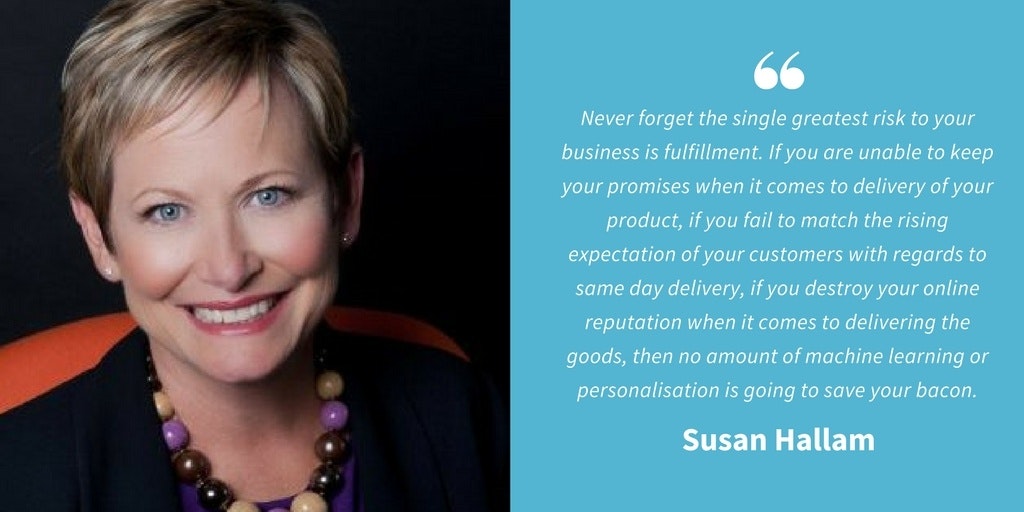
The advances in ecommerce technology are compelling and fascinating: personalisation, machine learning, interactivity. But never forget the single greatest risk to your business is fulfillment. If you are unable to keep your promises when it comes to delivery of your product, if you fail to match the rising expectation of your customers with regards to same day delivery, if you destroy your online reputation when it comes to delivering the goods, then no amount of machine learning or personalisation is going to save your bacon.
Kegesa Danvas Abdullah
Senior Copywriter, Cute Writers
Twitter LinkedIn

“Live chat matters a lot. Some customers may wish to purchase your product but they may abandon the basket because of technicalities. In such cases, they need help. Some may fear calling because of lack of airtime. Emails may also take longer to reply. They need a live chat agent.
You need to make sure that every willing buyer gets the right product. Having a team of dedicated live chat agents can help you close the sale.
Customers don’t want to wait in the queue. Things like “you will be served in 20 minutes” only help businesses lose money. Do not hide the live chat widget too much. Keep it available on all pages. I had to hunt for it a little longer.”
Razvan Girmacea
CEO & Founder, Competitive Business
Twitter LinkedIn

“When starting out, forget about big investments in stock or website. Test by getting a Shopify store and start doing some marketing/advertising to validate your product.”
Ashutosh Rai
Assistant Manager Digital Marketing, Igniva Infotech Pvt. Ltd.
Twitter LinkedIn
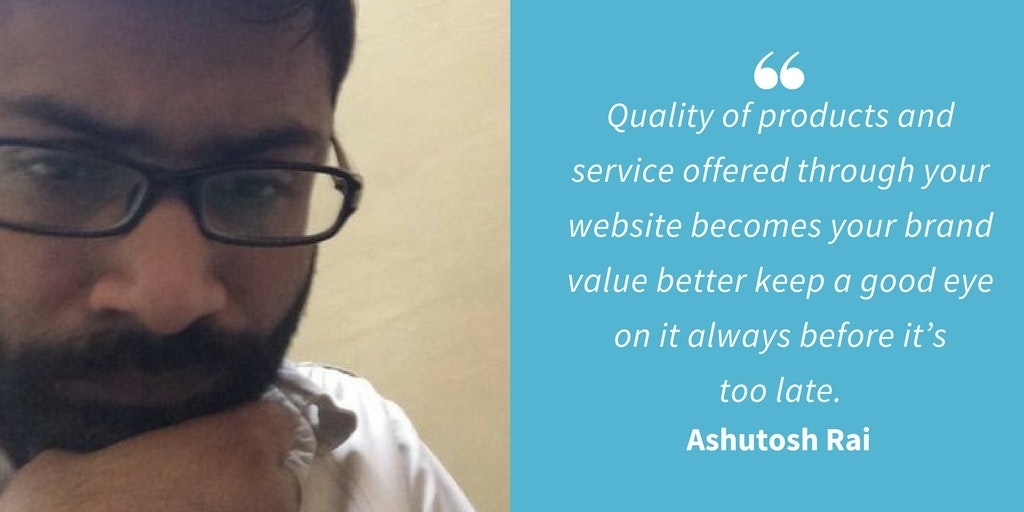
“Always stay one step ahead in addressing your customer needs. Find win-win solutions for your customers and your business. Be loyal to your customers and they will take care of your business over long period of time. Be proactive in addressing customers complaints whichever channel they come through. Quality of products and service offered through your website becomes your brand value better keep a good eye on it always before it’s too late.”
Rachel Jacobs
Head of Content, Pixc
Twitter LinkedIn

“When getting started with product photography, don’t over complicate things. My top tips are to keep things simple and be organised. Plan out exactly what you intend to shoot, and organise any tools or equipment you might need.
Getting to grips with natural lighting can be a handful at the best of times. Being organised will help make the most of your time, and keep you on track.
I’d recommend taking up to 12 images per product on a white background, giving a 360 view of the product. As you become more confident behind the camera, why not play with some in-context shots.”
Dhanasekar MJ
Manager – Digital Marketing, Zoho Corporation
Twitter LinkedIn
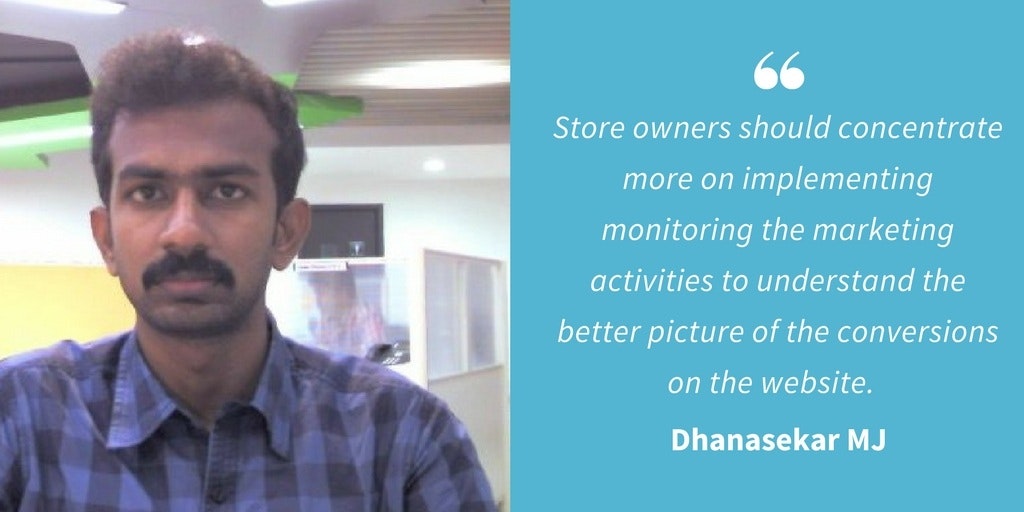
“Store owners should concentrate more on implementing monitoring the marketing activities to understand the better picture of the conversions on the website.
Google Analytics can be set up to keep tracking of things on the store like cart abandonment, transactions, product wise revenue tracking and giving more efforts to which products sell more will bring more ROI.
Make sure your website should go friendly on Mobile, Laptop, Tablet, and Desktop. Need to implement separate Mobile App on Android & IOS play store. Also optimise the app more for buyer friendly, since the world started evolving more on Mobile.”
Gail Gardner
Small Business Marketing Strategist, GrowMap
Twitter LinkedIn
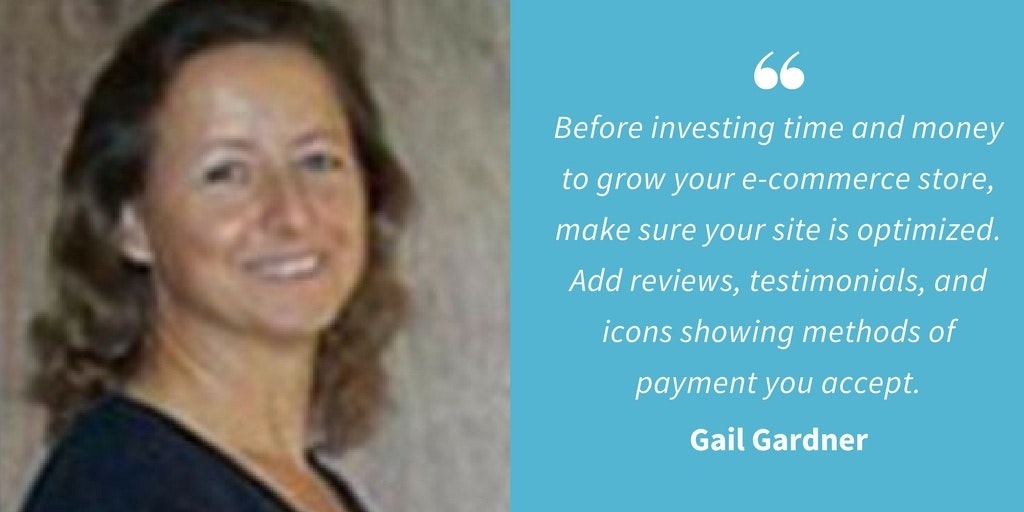
“Before investing time and money to grow your e-commerce store, make sure your site is optimized. Add reviews, testimonials, and icons showing methods of payment you accept. Ensure your about page has at least one photo of your store or team. Include an address and phone number on every page – even if you don’t have an offline store. Shipping details need to be complete and on their own page. Upgrade your search function so that it can return quality results for multiple word searches. Display cross-selling and upselling options. These features will increase your conversions and average sale amounts.”
Larry Engel
Director of Search Engine Marketing, OuterBox
Twitter LinkedIn
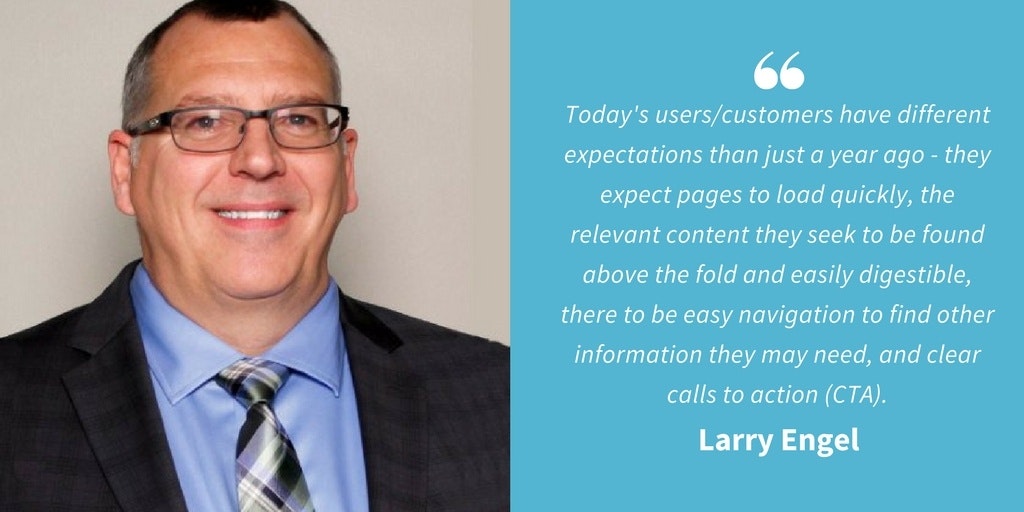
“2018 [is] the year for focusing on user experience (UX) and conversion rate optimization (CRO). Today’s users/customers have different expectations than just a year ago – they expect pages to load quickly, the relevant content they seek to be found above the fold and easily digestible, there to be easy navigation to find other information they may need, and clear calls to action (CTA).
All ecommerce stores should seriously consider switching to accelerated mobile pages (AMP). Proper AMP implementation will improve UX and CRO. One study showed conversion to AMP improved Time Spent on Page by 100% and Sales/Conversions by 20%.”
Jennifer Glass
CEO, Credit Cards NJ
LinkedIn

“There are so many tips that I can share, but knowing how to properly be setup can be a game changer – from being properly secure on the processing (knowing if your site is only using SSL or the more secure TLS 1.2 protocols can mean the difference between being PCI compliant or not). Also, being able to pass along additional data from the sales (using Level 2 or Level 3 data) can mean a much greater savings on the cost of the transaction.”
Shashi Bellamkonda
Chief Marketing Officer, Surefire Local
Twitter LinkedIn
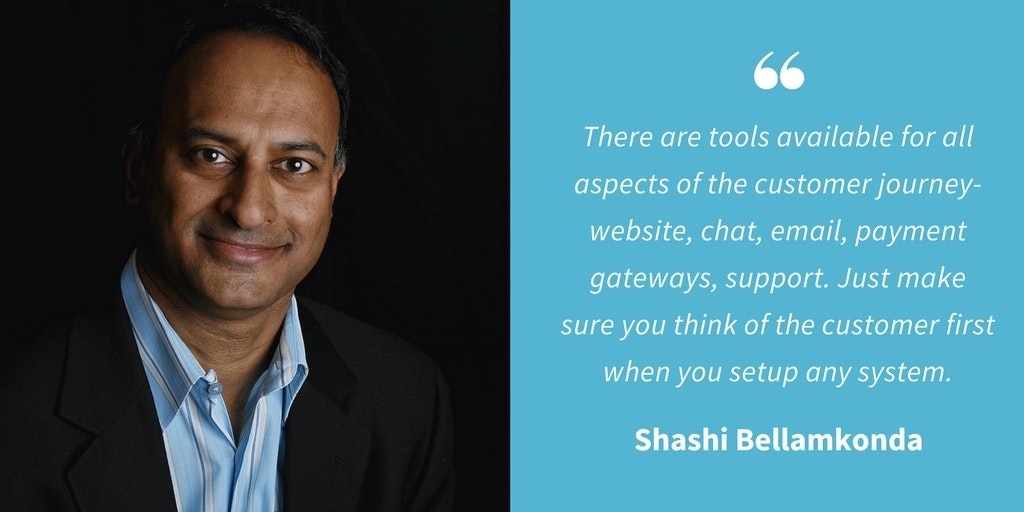
“Amazon and Apple have succeeded by thinking beyond the transaction and owning the experience at every stage. Amazon took ownership of the delivery experience and developed expertise in delivery logistics. Riding sharing apps think about the users drive experience and setup systems with drivers accordingly.
As you establish your web presence, think of the entire customer journey.
How do prospects discover you?
Do you make it easy for them to:
- Do business with you?
- Come to you first with feedback?
- Refer other customers to you
Do you follow-up and make sure they are happy?
There are tools available for all aspects of the customer journey- website, chat, email, payment gateways, support. Just make sure you think of the customer first when you setup any system.”
Nirav Dave
CTO & Co-Founder, Capsicum Mediaworks, LLP
Twitter LinkedIn
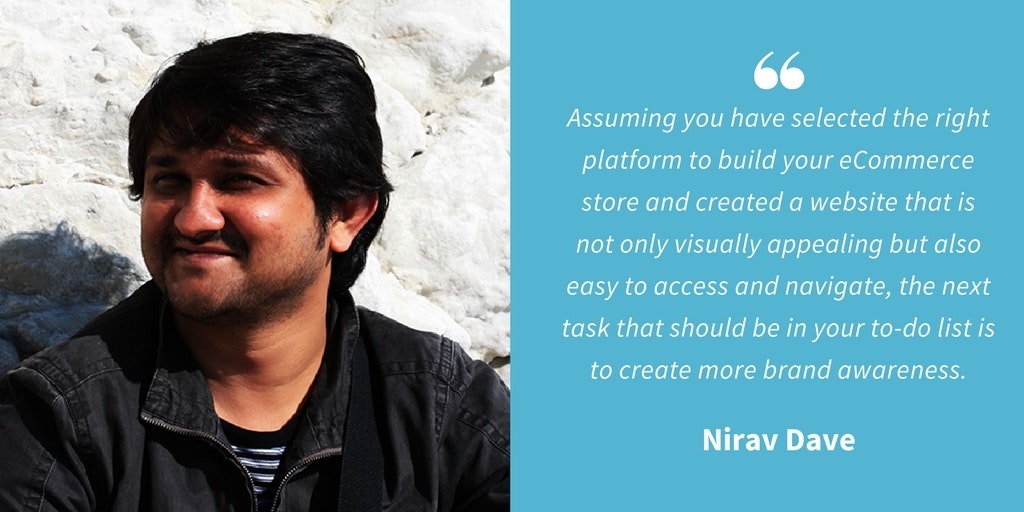
“Assuming you have selected the right platform to build your eCommerce store and created a website that is not only visually appealing but also easy to access and navigate, the next task that should be in your to-do list is to create more brand awareness. The fastest way to achieve this is through paid advertising. However, this is a short-term solution and it requires you to have a substantial budget.
My tip for eCommerce store owners would be to focus more on SEO and Social Media after they have launched their website in order to garner more organic traffic and to gain visibility. Both of these are a cost-effective marketing channels and can provide a far better return on your investment in the long-run.
You need to create social media profiles for your business across all relevant social networks and ensure that you post content on it consistently. SEO is also important in order to optimize your site for users and search engines. And both of these techniques, in return, will help boost brand awareness, resulting in more traffic and increase in sales and revenue.”
Jean Ginzburg
CEO, Ginball Digital Marketing
Twitter LinkedIn
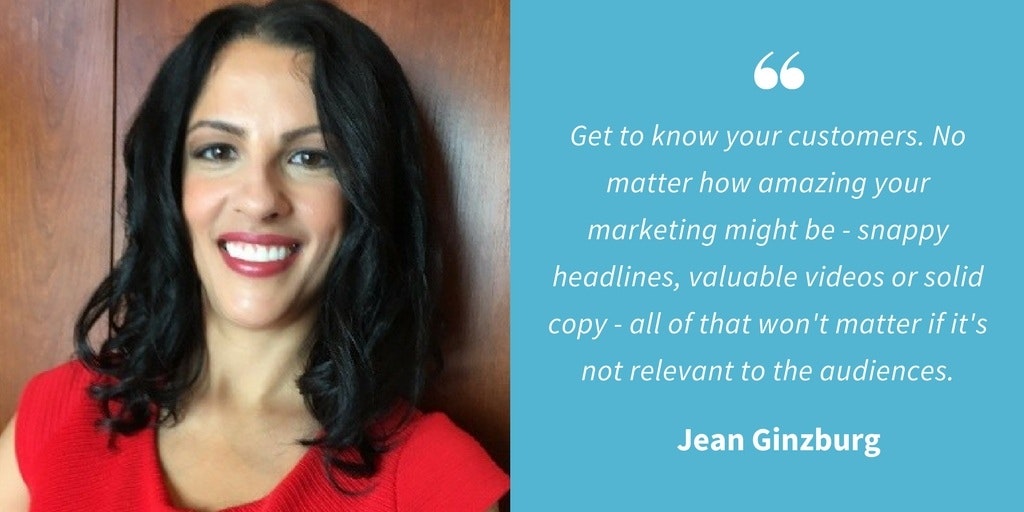
“Get to know your customers. No matter how amazing your marketing might be – snappy headlines, valuable videos or solid copy – all of that won’t matter if it’s not relevant to the audiences. Understand your customer and go beyond just demographic information – gender, age, geo location – get to their pain points and frustration and how your product/service solves their pain points and frustrations.”
Heather Cooan
Founder & CEO, HDC Digital, LLC
Twitter LinkedIn
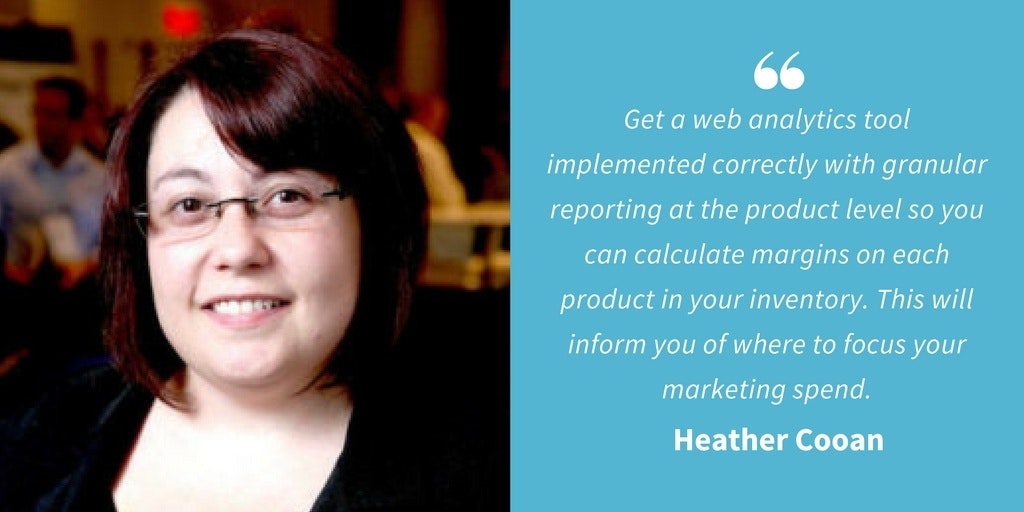
“Get a web analytics tool implemented correctly with granular reporting at the product level so you can calculate margins on each product in your inventory. This will inform you of where to focus your marketing spend.”
Aaron Orendorff
Editor in Chief, Shopify Plus
Twitter LinkedIn

“It’s not sexy, but focus on your core competency, which — for nearly all merchants — means creating, selling, and delivering an exceptional product. Everything else you’ll ever do flows from that central ingredient. Learn as much as you can from your customers on this front, especially from the returns and exchanges.”
Chris Makara
Founder, Bulkly
Twitter LinkedIn
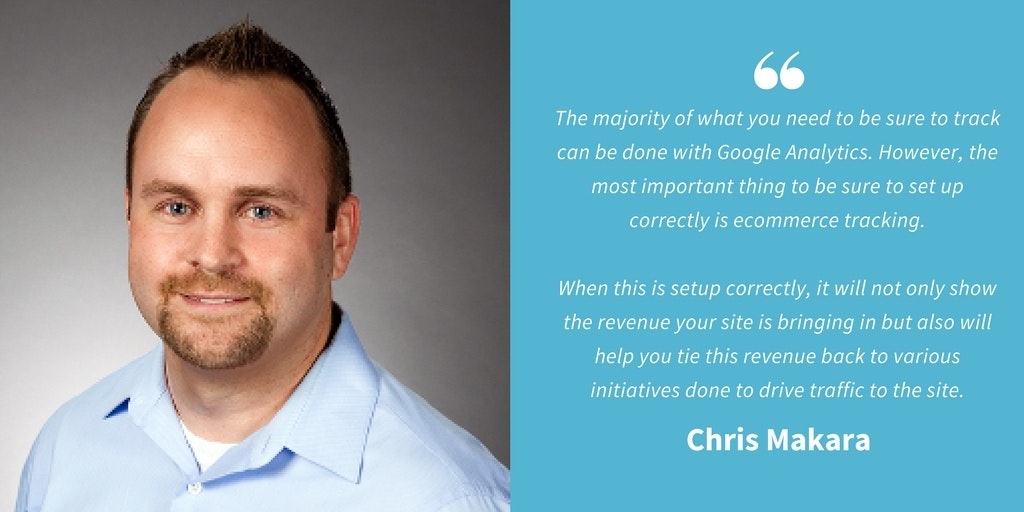
“For me, it comes down to tracking/measuring what you are doing.
And when it comes to ecommerce, it’s critical that you’re properly tracking what you are doing.
The majority of what you need to be sure to track can be done with Google Analytics. However, the most important thing to be sure to set up correctly is ecommerce tracking.
When this is setup correctly, it will not only show the revenue your site is bringing in but also will help you tie this revenue back to various initiatives done to drive traffic to the site.
This is critical in that it will give you insight to what is (or isn’t working) when marketing your business. From there you can make adjustments and focus on more of what is working.
And making these adjustments as needed will help you grow your business moving forward.”
Warren Whitlock
Founder and CEO, TopLine Revenues
Twitter LinkedIn

“There is plenty of money to be made in optimizing for a profitable transaction but if that’s your end goal, you are leaving most of the profits on the table. Rather than developing a brand and relationship to make a sale, consider how the first sale just a step toward a profitable relationship.”
Craig Hansen
Founder, Rapid Traction
Twitter LinkedIn
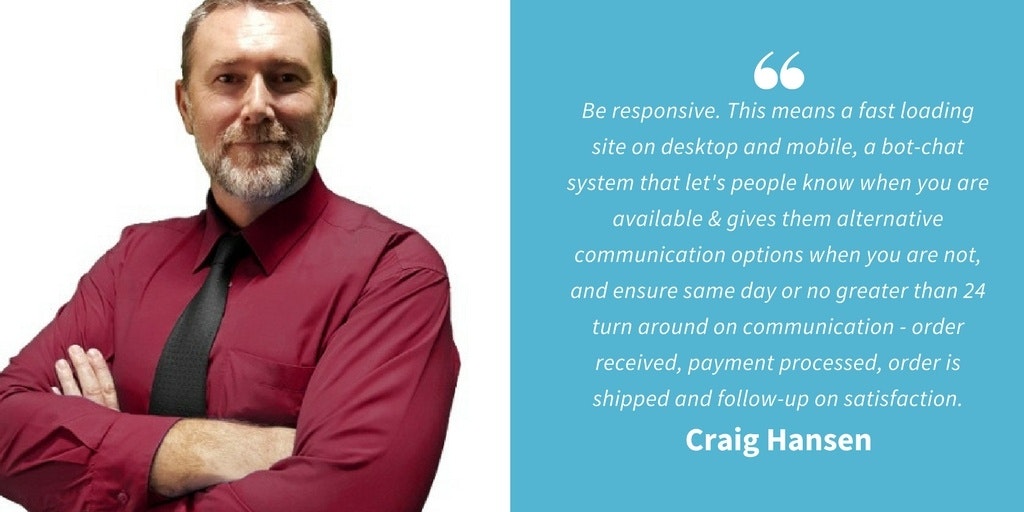
“Be responsive. This means a fast loading site on desktop and mobile, a bot-chat system that let’s people know when you are available & gives them alternative communication options when you are not, and ensure same day or no greater than 24 turn around on communication – order received, payment processed, order is shipped and follow-up on satisfaction.”
Erika Feinberg
Phronesis Specialist, ApexOutcomes
Twitter LinkedIn
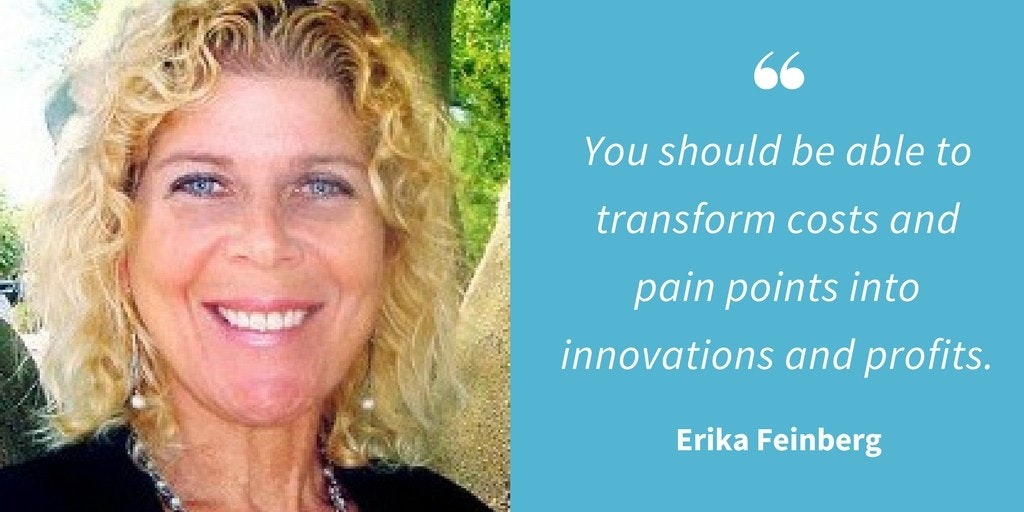
“Watch this short video: https://youtu.be/JSkTq9PTej4. Then, look at your highest costs or pain points. Then, look at the population you are touching. Then, look at how specific stakeholder groups you’re already involved with might benefit from being exposed (meaningfully) to that audience. Then, craft a brilliant program that benefits everyone involved…especially the audience (through every channel…including print…print is not dead). You should be able to transform costs and pain points into innovations and profits if you approach this formula mindfully! This is my superhero power and what got me to where I am today. It works, and everyone wins!”
Sam Hurley
Founder, Optim-Eyez
Twitter LinkedIn
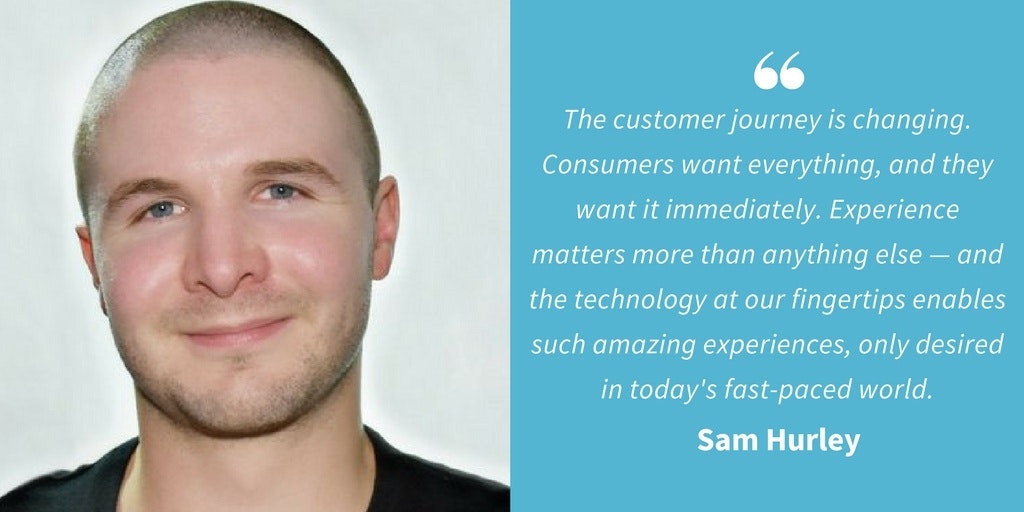
“As we head into 2018, my best tip (by far) is to utilize AI (Artificial Intelligence).
The innovative tech of today allows ecommerce businesses to scale by automating and enhancing an array of operations and initiatives to a degree otherwise impossible.
5 key applications for AI in Ecommerce:
- Predictive Marketing
- Hyper-Personalization (at scale)
- Search Results on steroids
- Dynamic Pricing (including inventory automation)
- Chatbots / Virtual Assistance
The customer journey is changing. Consumers want everything, and they want it immediately. Experience matters more than anything else — and the technology at our fingertips enables such amazing experiences, only desired in today’s fast-paced world.
AI is finding its way into every aspect of our professional (and personal!) life — SEO, content creation, Social Media, ads and customer service — to mention only a few areas.
Consumers are constantly exposed to the best of the best, and their tolerance for anything less is diminishing.
“81% of consumers want brands to get to know them and understand when to approach them (and when not to).”
Without AI and machine learning, this is a colossal challenge.
Failure to stay on top of trends places ecomm brands at risk of falling majorly behind in the fierce battle for attention.”
Murat Yatağan
SEO & UX Consultant , Yatagan Consultancy
Twitter LinkedIn

“Focusing on ever changing consumer behaviours and analyzing searchers’ intent to build up their strategy to have a better search visibility. In addition to in coming traffic channel optimization, it’s quite significant to drive revenues from these visits. Therefore e-commerce business owners should spend a valuable amount of their time smartly to read and monitor visitors’ footprints on site e.g. shopping cart drop off rate, cohort analysis and conversion rate etc. In general, focus on user and prefer best practices of digital marketing, and the [rest] will follow.”

